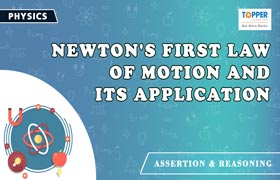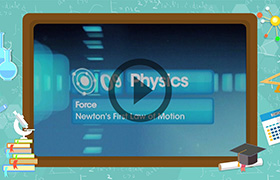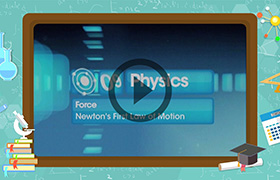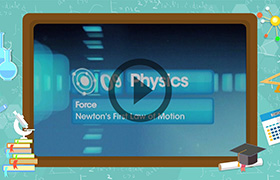CBSE Class 9 Answered
explain the derivation of laws of motion
Asked by kaveri.pasham0810 | 05 Jan, 2021, 06:26: AM
Newton's first law of motion -
An object at rest remains at rest, or if in motion, remains in motion at a constant velocity unless acted on by a net external force.
Newton's second law of motion states that rate of change of momentum of an object is directly proportional to the applied force and takes place in the direction in which the force acts.
Thus,
 Where,
F - Force applied
m - mass
v - final velocity of an object
u = initial velocity of an object
Newton's third law of motion -
For every action there is equal and opposite reaction.
Where,
F - Force applied
m - mass
v - final velocity of an object
u = initial velocity of an object
Newton's third law of motion -
For every action there is equal and opposite reaction.

Answered by Shiwani Sawant | 05 Jan, 2021, 13:36: PM
Application Videos
Concept Videos
CBSE 9 - Physics
Asked by kaveri.pasham0810 | 05 Jan, 2021, 06:26: AM
CBSE 9 - Physics
Asked by ruby2shifa | 19 Sep, 2020, 16:33: PM
CBSE 9 - Physics
Asked by kumarikhushi08338 | 15 Apr, 2020, 13:56: PM
CBSE 9 - Physics
Asked by samarthdarole | 18 Nov, 2019, 08:47: AM
CBSE 9 - Physics
Asked by kukusabat | 17 Oct, 2019, 18:02: PM
CBSE 9 - Physics
Asked by vk6089651 | 25 Sep, 2019, 00:35: AM
CBSE 9 - Physics
Asked by Vats4334 | 23 Aug, 2019, 22:31: PM
CBSE 9 - Physics
Asked by satendrayadav6e958 | 31 May, 2019, 05:15: AM
CBSE 9 - Physics
Asked by dhanrajshivalekar | 13 Nov, 2018, 14:00: PM
CBSE 9 - Physics
Asked by vishalvchavan9 | 02 Oct, 2018, 08:48: AM






